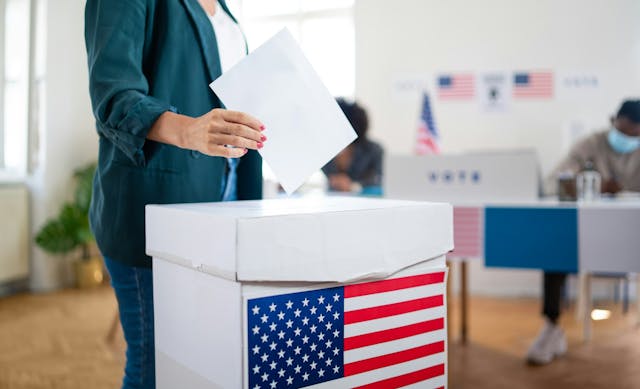Solving Problems with Ranked Choice Voting: Replacing Runoffs

Author: Fair Vote
As the general election nears, FairVote will discuss problems with our election system and electoral solutions offered by ranked choice voting.
In a previous blog post, we discussed the problems that can arise when more than two candidates run, and one candidate can without a majority. In reaction to this problem, many states and localities hold a second election featuring the top two vote-getters if no candidate in the primary or general election wins a majority of the vote. This second election is commonly referred to as a “runoff election.” While runoff elections are a well-intentioned attempt at ensuring majority winners, they generate a whole slew of problems that make for an incomplete solution.
To begin with, FairVote research on Congressional primary runoffs shows that voter turnout is almost always lower in the runoff than in the initial primary election. In a twenty-year period, 177 of 184 scheduled primary runoffs for U.S. House and Senate races experienced lower turnout than the initial elections. On average, more than a third of those who voted in the initial primary stayed home for the runoff. In Texas’s 32nd Congressional District, for example, the 2008 runoff saw a decrease in turnout of almost 94% from the first election. To be sure, nominating a candidate with majority support is a worthy goal of a runoff election. However, when so many fewer people vote in the second election, results can be just as unrepresentative as the initial primary, had a winner been selected with a plurality of the vote.
Why does turnout plummet in runoffs? Beyond voter fatigue and the scorched earth campaign tactics that often accompany runoffs, one key factor seems to be the delay between elections. Of the congressional runoffs that FairVote studied, more elections had a gap of twenty-one to thirty days than any other range, and median turnout decline for these elections was more than thirty percent from 1994 to 2014. Median decline for runoffs held thirty-one to forty days after the initial election had the most severe median turnout decline at just under fifty percent. These gaps exist to allow election administrators to prepare for holding a second election, as well as to allow overseas and military voters to participate in the electoral process, as their ballots take much longer to be received than domestic and civilian voters. Nevertheless, the gap between the first election and the runoff election leads to a dramatic drop in voter turnout and compromises the representativeness of the election.
Continue reading the article here.
Editor's note: This article, written by Avi Steele, originally published on FairVote's blog on November 7, 2016.
Photo Credit: Africa Studio / shutterstock.com
Latest articles
Breaking Down the Numbers: Independent Voter Suppression in Pennsylvania
Pennsylvania held its primary elections Tuesday, which effectively acted as the general election in most cases. However, statewide, over a million voters had to sit on the sidelines because of the state's closed primary rules....
24 April, 2024
-
2 min read
DNC Loses Its First Attempt to Kick RFK Jr Off the Ballot
Independent presidential candidate Robert F Kennedy Jr will officially appear on the Hawaii ballot after a ruling Friday blocked an effort by the Democratic Party to disqualify him from ballot access. It marks the first loss by the DNC in its legal strategy to limit voters' choices on the 2024 presidential ballot....
22 April, 2024
-
3 min read
Former Arkansas Gov. Asa Hutchinson Declares His Support for Ranked Choice Voting
In a recent episode of The Purple Principle, a podcast that examines democracy and polarization from a nonpartisan lens, former Arkansas Governor Asa Hutchinson said that while he was skeptical of ranked choice voting at first, he now sees it as a meaningful solution to elect candidates with the broadest appeal....
19 April, 2024
-
2 min read


